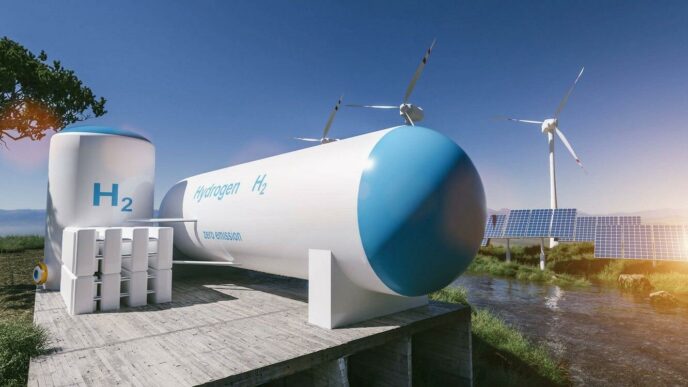
A full supply chain from generation to off-take is key to establishing a successful hydrogen project.
So says international management consultancy Partners in Performance which reckons Australia has a good chance to become a “green” hydrogen superpower.
”Apart from decarbonising industries, hydrogen is likely to play a role in the decarbonisation of transport as well, especially long-haul trucking and potentially in rail,” it says.
“Given the location of rest stations across the country and the cost to transport hydrogen, we might see smaller, local generations emerge, dotted along our highways. These may create hydrogen from grid energy, or dehydrogenate ammonia trucked to location.”
While much has been written about the cost to produce green hydrogen and how this compares to other colours such as grey (through steam methane reforming of natural gas), or blue (grey hydrogen but with the 10 kilos of CO2e emitted per kg of hydrogen captured and permanently stored), much could depend on a carbon price favouring green hydrogen as it’s made without any carbon emissions, Partners in Performance explains, adding there is not yet such a universal mechanism in many countries, including Australia.
During the past 18 months, Australia has seen many announcements to develop hydrogen export hubs, the consultants say.
“In addition to Australia’s National Hydrogen Strategy, most states now have a local hydrogen strategy as well, each declaring their own respective competitive advantages.”
However, there are many sceptics suggesting countries like Japan could produce hydrogen themselves with offshore wind at a lower cost, rather than importing from Australia.
“And, even if Japan wanted to import hydrogen, why would Australia have an advantage over other countries with equally ample supply of sun and wind, or massive hydro?”
While Japan could create hydrogen locally, like most countries it has some wind and solar but is certainly not blessed in that regard, Partners in Performance explains.
“On-shore there isn’t much space for either solar or wind, and offshore wind will require wind turbines of the floating kind, able to deal with low average wind speeds and the occasional typhoon and tsunami.
“Energy would require it being transported to shore and need either expansion of the transmission network or hydrogen plants.”
The report notes that many obstacles would need to be overcome and that any electricity produced is likely to be consumed first as electricity, not hydrogen.
Japan could import hydrogen as it enjoys established supply chains, with more than 90% of Japan’s energy currently imported.
“Therefore making the tweaks to convert existing import facilities to hydrogen could be easier to overcome than expanding transmission networks. Japan already knows how to transport hydrogen, so they would just need to find the supply.”
Australia has a good scorecard, being a stable country at a modest distance through safe waters to Japan.
While the country may not yet win out on generation cost, transporting hydrogen from Chile to Japan will be more expensive than from Australia, reducing the gap, the consultancy believes.
“Chile doesn’t have an LNG export industry to lean on to establish hydrogen ports. Plus, it takes over 17,000km to travel to Japan from Chile, versus only 6800km or so from a place like Gladstone. If the transport has to be zero emissions as well, that’d tip the balance to be more in favour of suppliers closer to Japan.”
Partners in Performance says Japan will take hydrogen from a variety of sources, both domestic and international.
“If we took only a quarter of Japan’s projected demand by 2040, that’s 1000ktpa or one average ‘mega-project’. Add South Korea, Singapore and other countries, and there’s surely space for a few more mega-projects.”
The second big opportunity is domestic use, Partners in Performance adds.
“Various federal and state hydrogen strategies all call out ‘hydrogen hubs’, collocating hydrogen production and use. It is not very clear what these would look like but, through conversations with our clients, we do see obvious partnership possibilities.
“Fertiliser and explosives manufacturers, for example, could be among the first off takers of green hydrogen. Green steel, aluminium, etc, may later follow, and there is of course opportunity in long-haul transport.”
Partners in Performance says new technology may even enable municipal solid waste to be converted to hydrogen.
“As these projects directly help reduce emissions for the manufacturer, they will also easily attract green finance at favourable terms. Being both producer and customer, cost plays a lesser role, particularly in the presence of an (internal) carbon price.”
The consultancy says an important hurdle for electrolyser-based projects will be how to deal with the variability of renewable energy supply.








